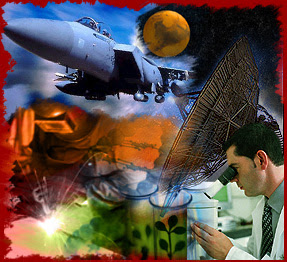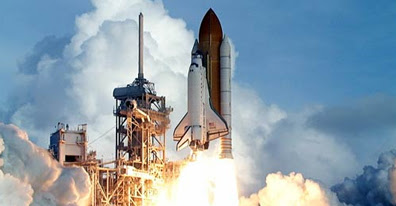INDIA’S PROGRESS IN SCIENCE & TECHNOLOGY
Indus Valley Civilisation: India’s progress in science and technology is not a new phenomenon. As early as 2.500 B.C., the Indus Valley Civilisation boasted well-planned towns, drainage systems and ports such as Lothal.
World’s Oldest University: In Takshila (India), the world’s oldest university was established in the year 700 BC. It has been said that the students had options to study more than 60 subjects. Even, the University of Nalanda was established in the Fourth Century BC. It is regarded as one of the greatest achievements of ancient India in the field of education.
Mathematics: Sulva Sutras, which embody the mathematical principles, then known, laid down the principles of geometry for the design and construction of sacrificial altars. It was in this land that use of zero originated which was also called Arabic numerals (acknowledging their Indian origin, the Arabs called them Hindus).
Read Also: Significance of the Harappan Civilization
Astronomy: Aryabhatta first put forth the idea of the rotation of the earth on its own axis and calculated the sidereal period of the earth’s rotation fairly accurately. Panchsiddhanta and Suryasiddhanta have greatly influenced the later scientific researches.
Medicine : The Atharvaveda is perhaps the original repository of India’s medical knowledge. Charaka and Sushruta Samhitas, the two great works on Ayurveda, the science of life, describe the medical and surgical practices used in India some 2.500 years ago.
Chemistry: Progress in chemistry led to well-established processes of dyeing, paper production, perfume and sugar manufacture, and the use of alloy. Several industrial metallurgical centres cropped up dealing with iron forging and copper smelting.
Technology: India’s technology progress was visible from the 6th century BC onwards, when signs of excellence were seen in multiple areas, like technical skills involved in iron metallurgy, and steel, copper, bronze working, craftsmanship in stones and metals, etc. The famous iron pillars at Delhi, Dhar, and Mt. Abu, the huge copper statue of Buddha at Sultanganj in Bihar and the beams of the temple at Konark are classical examples that proved the extraordinary skills of the blacksmiths at the time.
Science and Religion: Earlier, science and religion had been benefiting from each other. But later on, religion felt threatened by the progress of science and became antagonistic to it. Science cannot prevail over the entrenched power of the priestly class and learned Brahmins’ insular attitude, and all-pervading mysticisms retarded the pace of science.
Metallurgy: India invented a high carbon steel, which was called wootz. Wootz is the English for Ukku in Kannada and Telugu, meaning stall. During ancient times, the Indian steel was used to make swords and armours in Persia and Arabia. Ktesias at the court of Persia (5th century BC) mentions two swords made of Indian steel which the Persian King had presented him.
Science was revised once again with the advent of the Britishers in India, who brought with themselves a spirit of scientific enquiry and reform. The British tailored developments in S&T education essentially to serve the imperial needs to increase revenues, to meet defence requirements and to provide communication systems for trade and administrative control over the country. A series of surveying institutions were set up for mapping land and other natural resources of the country, meteorology made progress, railways, and other communication systems were developed.
POST-INDEPENDENT INDIA
Don’t Miss: Inventions that changed the WorldInventions that changed the World
Invention of Medicines: The Council of Science and Industrial research (CSIR) has played a vital role in not merely making India self-reliant, but also a net exporter in the fields of drugs and pharmaceuticals. The Council has adopted a dual strategy;developing new drugs and developing alternative and cost-effective routes for known drugs. Some of the drugs developed by CSIR are Centchroman (a non-steroidal, once-a-week contraceptive for women), Picroliv (a herbal drug for treatment of liver disorders), Acyclovir and AZT (anti-AIDS drugs having high export potential).
Ocean Development :The Government of India established the Department of the Ocean Development in 1981, to promote and co-ordinate the many endeavours required to accomplish the task. Its aim is also to develop the emerging frontier of Antarctic research and deep seabed mining. India along with the Caribbean countries has initiated a programme of training in an oceanographic research. This has led to a formation of Commonwealth Science Council (CSC), and India is a member of it. India’s research vessel ‘Sagar Kanya’ (the daughter of the sea) has navigated from the coastal Goa and touched around through 13 CSC member countries of the Caribbean. It has gathered a number of samples for the research work.
INDIA : A SOFTWARE SUPERPOWER
In the new millennium, India is emerging as a leader in the field of software engineering and web-based services. India’s IT-Sector is known for its cost-effectiveness, world-class quality, high reliability and rapid delivery. The Indian software industry has zoomed from a mere US$ 150 million ten years ago to a whopping US$ 3.9 billion in 1998-99, and US$ 15.9 billion in 2011-12.
Green Revolution: In the post-Independence era, self-reliance in food production is one of the major achievements. Under the guidance of Dr. M.S. Swaminathan, the Indian scientists strived for the development of Sankar, a hybrid seed. Irrigation facilities were extended and farmers were given free loans for seeds, pesticides and chemicals, and new methods of agriculture were implemented. The prediction of foreign scientists who said that India would never become self-reliant in food grain production was proved wrong, with the Green Revolution and later on, with the White Revolution (for dairy products). In 1949 AD, Verghese Kurien dreamt of a cooperative society in Anand, Gujarat. Today Anand is one of the main cooperatives in the world.
Space Development: India participation in the field of space research, dates back to 196 ^ when an Indian National CommittJ for Space Research (INCOSPAR) we set up under the chairmanship Dr. Vikram A. Sarabhai. India practical space activity began with that establishment of Thumba Equator: Rocket Launching Station (TERLS) Vikram Sarabhai Space Centre (VSSCB The
Indian Space Research Organisation (ISRO) took over the Commission in 1972. The first Indian satellite, Aryabhatta was launched 1975.
Nuclear Tests: In the year 194 Jawaharlal Nehru said: “India won’t develop atomic power for peace uses, but warned that, as long as he constituted as it was, every count would have to develop and use latest scientific devices for protection.” The Atomic EnergyCommission, set up in August 1948. responsible for all the atomic energy activities in the country.
Telecommunication:A Information Technology: India h made an amazing progress in this fie In 1947, India had only six Ra Stations which have now (in 201 increased to 376 stations, local across the country, reaching near 92% of the country’s area and 99.19 of the total population. AIR original programming in 23 languages a 146 dialect. In 1960-61, India h only one T.V. transmitter and there were more than 834 at the end December 1996. With the help satellites, all Indian villages are int connected with telephones, radios television networks. India has highest skilled software engineers the world.
Invention of Cryogenic Engine: India has joined the elite club with the successful test-firing of indigenously developed power: cryogenic engine used in rockets launch satellites in geostationary orb: 36,000 km above the Earth.
The five countries who have the capability to launch rockets was cryogenic engines are the US, Russia France, China and Japan. According, ISRO sources in Bengaluru, that lasted 10 seconds. It is one of a short-duration tests conduct before the engine can be tested for long duration. The cryogenic up stage project envisages design a development of an indigeno cryogenic upper stage to replace Russian-supplied cryogenic stage Geo-Svnchronous Satellite Launh Vehicle (GSLV).
Have a look at:





I LIKE THIS INFORMATIN .